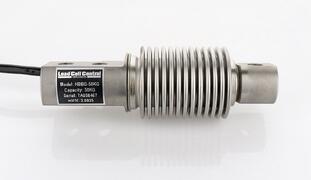Understanding 4-Wire Load Cells: Basics And Applications
June 12, 2025

In any industry where accuracy matters, weighing systems sit at the center of daily operations. From factory floors and research labs to farms and hospitals, precise force measurement keeps processes safe and consistent. One of the most widely used technologies behind this reliability is the 4-wire load cell. This trusted sensor converts mechanical force into a stable electrical signal that controllers, instruments, and monitoring systems can interpret with precision.
For engineers, electricians, and technicians, understanding how to wire, calibrate, and apply a 4-wire load cell is a foundational skill. These steps tie directly to better performance in both production and testing environments.
Let’s explore how a 4-wire load cell works, where it fits best, and how it compares to its 6-wire counterpart.
What Makes a 4-Wire Load Cell Work
A 4-wire load cell is a type of transducer designed to convert force or weight into an electrical signal. Inside the device, thin strain gauges are bonded to a metal element. When force is applied, this element deforms slightly—just enough for the strain gauges to detect a change in electrical resistance.
That resistance shift becomes the basis of the load cell’s output signal.
A 4-wire load cell uses four conductors:
- Two wires deliver excitation voltage to power the strain gauges
- Two wires carry the signal output back to the amplifier or controller
Once the amplifier boosts the low-level millivolt signal, a controller, PLC, or data acquisition system interprets the value. This simple, effective setup makes 4-wire load cells easy to integrate and ideal for most industrial and commercial weighing tasks.
How to Wire 4-Wire Load Cell Systems
Wiring a load cell can feel intimidating at first, but the process becomes straightforward with a basic understanding of standard color coding:
- Red → Excitation (+)
- Black → Excitation (–)
- Green → Signal (+)
- White → Signal (–)
The load cell wires connect to an amplifier module, which then connects to the system controller. Accurate readings depend on:
- A stable power supply
- Correct wire routing
- Clean, secure connections
- Shielded cable to reduce electrical noise
Once wired, the system must be calibrated. Technicians place known weights on the scale and adjust the calibration factor until the output matches the actual load. More advanced calibration methods use multiple reference weights to build a more precise curve across the entire measurement range. Temperature compensation may also be added for systems exposed to environmental variations.
Difference Between 4-Wire and 6-Wire Load Cells
A common question we hear is, “What’s the difference between a 4-wire and a 6-wire load cell?”
4-Wire Load Cells
- Simpler wiring
- Factory-calibrated for the exact cable attached
- Should not be trimmed or shortened
- Best for standard installations with short cable runs
6-Wire Load Cells
A 6-wire load cell has the same four primary conductors plus two sense wires:
- +Sense
- –Sense
These measure the actual excitation voltage at the load cell, not just what the power supply sends.
This allows the system to compensate for:
- Voltage drops
- Long cable runs
- Temperature-related resistance changes
This is why laboratories, precision testing environments, and large-scale industrial systems often prefer 6-wire load cells. For most commercial and industrial applications, however, a 4-wire load cell provides more than enough accuracy.
Applications of 4-Wire Load Cells
Because of their simplicity, reliability, and versatility, 4-wire load cells appear across nearly every industry that relies on accurate weighing.
Manufacturing
- Conveyor belt scales
- Batch processing systems
- Bottling and filling equipment
Agriculture
- Livestock scales
- Crop weighing systems
- Feed monitoring
Healthcare
- Hospital beds with integrated weight monitoring
- Patient lifts and medical scales
Research & Testing
- Laboratory force measurement setups
- Material testing equipment
Logistics & Shipping
- Package verification
- Checkweighing
- Pallet and warehouse scales
Wherever consistent, dependable weight measurement is required, the 4-wire load cell proves its value.
Calibration, Testing, and Maintenance
As with any precision device, a 4-wire load cell must be properly calibrated to deliver reliable results. This process typically involves applying known weights, checking output values, and adjusting the calibration factor in the controller software.
Using multiple calibration points increases accuracy, especially for systems operating across a wide load range.
For routine testing, load cell simulators and testers offer a convenient way to verify system behavior without applying physical loads—ideal for high-volume production lines where downtime must be minimized.
Maintenance Tips:
- Inspect cables for damage or wear
- Check mounting hardware for stability
- Ensure connectors remain clean and moisture-free
- Avoid placing tension on cables
- Keep a log of calibration dates and performance checks
When problems arise, professional load cell repair services can restore system accuracy and extend the life of the equipment.
Why the 4-Wire Load Cell Still Matters
Even as sensing technologies advance, the 4-wire load cell remains a cornerstone of modern measurement. It strikes the perfect balance between precision, simplicity, and broad compatibility.
At Load Cell Central, we work with industries ranging from manufacturing and logistics to agriculture, healthcare, and research. Our team provides guidance, product selection support, and repair services to help customers get the best performance from their load cells.
If you need assistance choosing, wiring, or maintaining a 4-wire load cell, reach out to our experts. We’re here to help at every step.